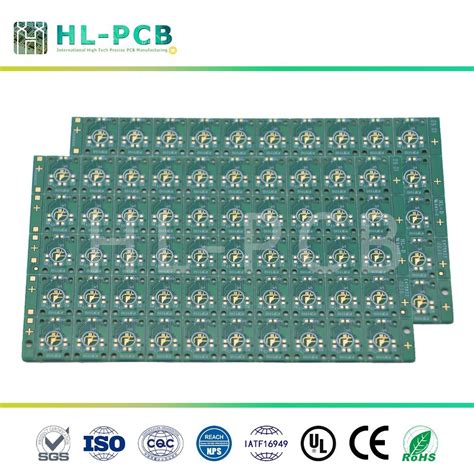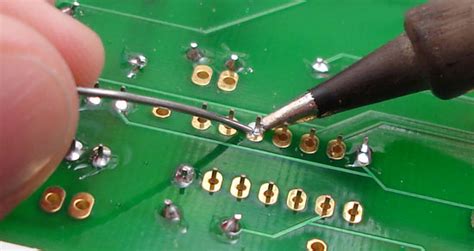How to Wire a PCB Input Jack: A Comprehensive Guide
Introduction
Printed Circuit Board (PCB) input jacks are essential components in audio electronics, guitar effects pedals, and various other electronic devices that require audio signal input. Properly wiring a PCB input jack is crucial for ensuring optimal signal transfer, minimizing noise, and maintaining the overall functionality of your electronic project. This 2000-word guide will walk you through the entire process of wiring a PCB input jack, covering different jack types, wiring techniques, and troubleshooting tips.
Understanding Input Jack Types
Before wiring your PCB input jack, it’s important to understand the different types available:
1. Mono (TS) Jacks
- Two connections: Tip (signal) and Sleeve (ground)
- Commonly used for unbalanced mono signals
- Found in many basic audio devices and guitar cables
2. Stereo (TRS) Jacks
- Three connections: Tip (left channel), Ring (right channel), Sleeve (ground)
- Used for balanced mono signals or stereo signals
- Common in headphones and professional audio equipment
3. Switching Jacks
- Feature additional switching contacts
- Can disconnect batteries or enable features when nothing is plugged in
- Popular in guitar pedals to conserve battery life
4. PCB Mount vs. Panel Mount Jacks
- PCB mount jacks solder directly to the circuit board
- Panel mount jacks require wiring to connect to the PCB
Tools and Materials Needed
To properly wire a PCB input jack, gather the following:
- Soldering iron (25-40W recommended)
- Quality solder (lead-free or 60/40 lead-tin)
- Wire strippers/cutters
- Helping hands or PCB holder
- Multimeter for continuity testing
- Appropriate gauge wire (typically 22-24 AWG)
- Heat shrink tubing or electrical tape
- Desoldering pump or wick (for corrections)
- Safety glasses
Step-by-Step Wiring Process
Step 1: Identify the Jack Connections
Examine your input jack to identify its connection points:
- For TS jacks: Tip (signal) and Sleeve (ground)
- For TRS jacks: Tip, Ring, and Sleeve
- For switching jacks: Additional lugs for switching functions
Most jacks have markings or datasheets indicating which lug corresponds to which connection.
Step 2: Prepare the Wires
- Cut two pieces of wire to appropriate length (consider strain relief)
- Strip about 3-5mm of insulation from each end
- Tin the exposed wire ends with a small amount of solder
Step 3: Solder Wires to the Jack
- Secure the jack in a helping hands tool or vise
- For TS connection:
- Solder one wire to the tip connection
- Solder the second wire to the sleeve connection
- For TRS connection:
- Solder third wire to the ring connection if needed
- For switching jacks:
- Solder additional wires to switching contacts as per your circuit requirements
Step 4: Route Wires to PCB
- Plan the wire route to avoid sharp bends or stress points
- Consider using cable ties or adhesive anchors for strain relief
- Keep signal wires away from power lines to prevent interference
Step 5: Solder Wires to PCB
- Identify the input jack pads on your PCB (often labeled “IN,” “INPUT,” or with a jack symbol)
- Typically:
- Signal wire connects to the input pad
- Ground wire connects to the ground plane or designated ground pad
- Insert wires through holes or solder to surface pads as appropriate
- Apply solder quickly (1-2 seconds) to avoid damaging PCB
- Trim excess wire length after soldering
Step 6: Insulate and Secure Connections
- Apply heat shrink tubing over exposed connections where possible
- Use electrical tape for areas where heat shrink can’t be applied
- Secure wires to prevent strain on solder joints
Special Considerations for Switching Jacks
Switching jacks add complexity but offer useful functionality:
Battery Disconnect Feature
- Common in guitar pedals
- When nothing is plugged in, the switching contacts open and disconnect battery
- When cable is inserted, contacts close and complete circuit
Stereo/Mono Switching
- Some jacks can detect mono vs. stereo plugs
- Can switch circuit behavior based on plug type
Wiring these requires careful attention to which contacts are normally open or normally closed when no plug is inserted.
Grounding Techniques
Proper grounding is essential for noise reduction:
- Star Grounding: Route all grounds to a single point
- Ground Plane: Use a continuous copper pour on PCB
- Keep analog and digital grounds separate when possible
- Consider a ground loop breaker if hum persists
Shielding and Noise Reduction
To minimize interference:
- Use shielded cable for signal wires in noisy environments
- Connect cable shield to ground at one end only
- Keep input wires away from transformers or power supplies
- Consider a Faraday cage for extremely sensitive circuits
Testing Your Connection
After wiring:
- Visual inspection for cold solder joints or bridges
- Continuity test with multimeter:
- Check for proper connections
- Verify no shorts between signal and ground
- Functional test with audio source
- Listen for hum, crackling, or signal loss
Common Problems and Solutions
No Signal
- Check for broken connections
- Verify plug is fully inserted
- Test continuity from jack tip to PCB input
Intermittent Signal
- Look for cold solder joints
- Check for loose connections
- Examine jack for worn contacts
Hum or Buzz
- Verify proper grounding
- Check for ground loops
- Ensure power supply is clean
Channel Imbalance (Stereo)
- Verify equal resistance in both channels
- Check for proper wiring of tip and ring
Advanced Techniques
Balanced Input Wiring
- Requires TRS jack and differential amplifier
- Hot signal to tip, cold signal to ring, ground to sleeve
- Provides better noise rejection for professional audio
Insert Jack Wiring
- Special configuration for effects loops
- Typically uses TRS jack with tip as send, ring as return
Multi-channel Inputs
- Some devices use single jack for multiple inputs
- May require custom switching or multiplexing
Maintenance and Longevity Tips
- Periodically clean jack contacts with contact cleaner
- Inspect solder joints for cracks or corrosion
- Ensure strain relief prevents wire fatigue
- Consider gold-plated jacks for critical applications
- Replace jacks showing wear or intermittent connections
Safety Considerations
- Always disconnect power before working
- Use proper ventilation when soldering
- Wear eye protection when cutting wires
- Be cautious of sharp metal edges on jacks
- Double-check polarity to prevent damage to components
Conclusion
Wiring a PCB input jack correctly is fundamental to building reliable audio electronics. By understanding the different jack types, following proper soldering techniques, and implementing good grounding practices, you can ensure clean signal transfer and long-term reliability in your projects. Whether you’re building guitar pedals, audio interfaces, or other electronic devices, mastering input jack wiring will serve as a valuable skill in your electronics toolkit.
Remember that practice improves soldering technique, and don’t be discouraged by initial challenges. With attention to detail and methodical testing, you’ll be able to wire PCB input jacks confidently for any application. Always refer to specific component datasheets when available, as jack configurations can vary between manufacturers. Happy building!






